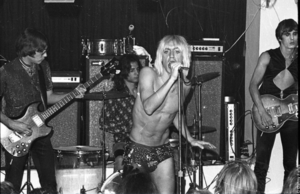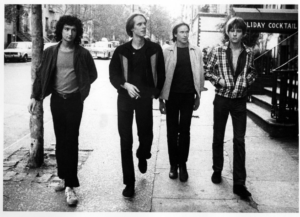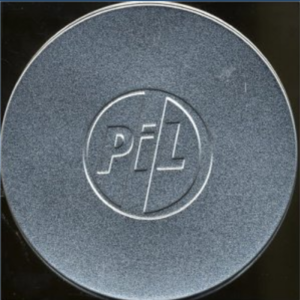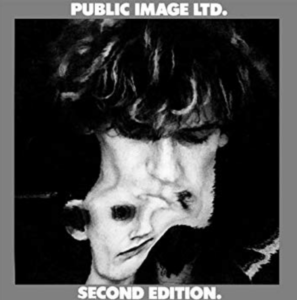A Tiny Bit of Punk History and PiL’s Metal Box (1979)
Written by Darshak Chudasama on June 19, 2019
The leap John Lydon took from the raw angst that fueled the Sex Pistols to the experimental (but refined) Public Image Ltd. helped revolutionize the idea that punk could remain edgy while simultaneously pushing musical boundaries. That is what post-punk was all about: taking the ethos of punk through unknown musical territory. Punk was born from outcasts that loved rock at its core, with all its heavy guitar chords, unpolished vocals, and straightforward lyricism. Rock at the time was everything but that. 1970s rock superstars Led Zeppelin were known for their lengthy shows, extending songs far beyond 10 minutes due to improvisation while Robert Plant screamed away about some Tolkien mythology. Pink Floyd were busy creating extraterrestrial concept albums that aimed to expand the boundaries of typical song structure. It was all extremely played out but still dominated the mainstream. The alternative scene in North America, however, continued to develop and slowly amalgamate under the radar.

Iggy Pop and The Stooges
In the early 70s, Iggy Pop, often referred to as the Godfather of Punk, speedily paved the way for those itching for something far west from what was being offered. The Stooges ironically embraced the idea of boredom in their music, but used that annoyance to perform as if their lives depended on it. Pop specifically was quite a performer. He would vigorously roll around the floor, scream half naked, and from time to time self-mutilate — sometimes all at once with a dog collar strapped around his neck. Punk was being born before people’s eyes, but it seemed that only those looking for an escape from mainstream rock would accept it. Fast-forward a few years to 1976 and we see the development of more accessible punk with the debut of The Ramones. In some ways, Ramones acts completely against the mainstream. Not a single track in the album reaches the 3 minute mark. There were no drawn out guitar solos. The Ramones were fast, aggressive, and anti-everything. Their brevity combined with their catchy hooks marked a major shift in how music could be approached; pulling rock from the spaceships up above, and grounding it. Thus, punk as we know it today was born.

Classic post-punk group Television
The back-to-the-roots, rock ‘n’ roll approach that The Ramones developed was quickly challenged by post-punk groups such as Gang of Four, Wire, Television, and without need of mention, Public Image Ltd. (PiL). Less than a year after the Ramones released their seminal debut album in 1976, fellow New Yorkers Television released Marquee Moon, a post-punk masterpiece full of beautiful guitar interplay and poetic lyricism — quite the antithesis of Ramones. As some groups elevated the speed and aggression of punk into the hardcore scene, these mentioned above took another route, incorporating aspects of dub, disco, funk, and even krautrock. No one pushed the envelope further than PiL.

Original pressing of Metal Box
In 1979, PiL released Second Edition. It was originally named “Metal Box” as the vinyl was packaged in a metal film canister. The idea itself was profound, but the metal packaging was soon revoked due to its inaccessibility, as it was near impossible for consumers not to damage the vinyl when unboxing it. The album cover was replaced with a funhouse image of guitarist Keith Levene. Album cover aside, everything about Metal Box is avante-garde. The 10 minute opening track “Albatross” is the sound of nightmare-ish disco. Albatrosses sometime symbolize bad luck or emotional burdens, by which Lydon could be referring to his recent departure from the Sex Pistols. Tracks like “Memories” and “Careering” have driving basslines that could easily be the main attraction if one doesn’t get lost trying to give meaning to Lydon’s cryptic lyricism. Possibly the most haunting cut on Metal Box, “Swan Lake,” was a song Lydon had written upon request by his mother who was dying of cancer. He paints a scarring image,
Watch her slowly die
Saw it in her eyes
Choking on a bed
Flowers rotting dead

Reissue titled Second Edition
There were a few drummers who helped record Metal Box, but none of them utilized the low-end tom-toms like Richard Dudanski did on “No Birds.” Dudanski served as a break from the disco drum beats that were plastered over the rest of the album and instead backed Lydon’s ghostly vocals with some oomph. “Socialist” and “Graveyard” are both instrumental tracks that you simply can’t stop dancing to. The former is futuristic, featuring robotic boops and beeps, and the latter integrates an incredibly snazzy drumbeat with a hi-hat that can do wonders. That’s what’s so unique about this album. No matter how desolate or alienated you feel from Lydon’s dawdling singing, Jah Wooble’s bassline never disappears. The groove never stops.
But there are some things that are better to be experienced than to be read, like listening to Lydon sing about a Japanese rape victim who recalled a strange pop-tune being played in the vehicle on “Poptones.” And it would be impossible to explain why such bleak overtones could possibly speak through such a danceable frequency. It just does. PiL was a major stepping-stone for punks in general. To see a radical punk embellish a completely new persona, from leather jackets to the sophistication of suits, was revolutionary to say the least. Metal Box certainly wasn’t the first post-punk album, nor was it the last, but its ability to drench itself in avant-garde to such an accessible degree was a punch-in-the-face for the posh critics who didn’t think punks could ever expand so brilliantly.


